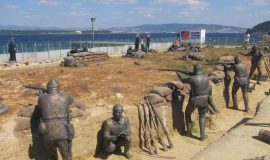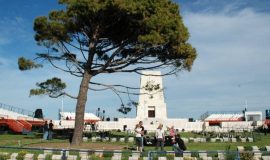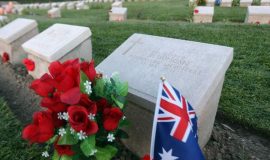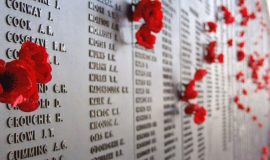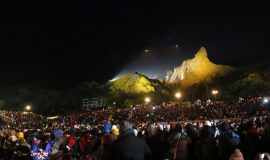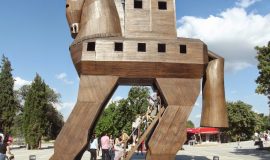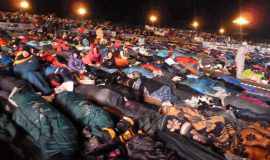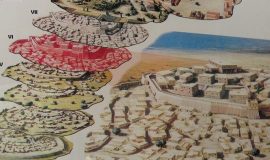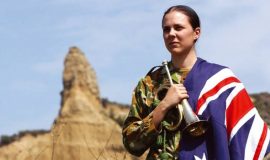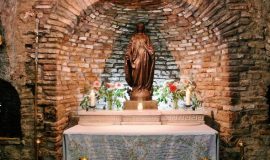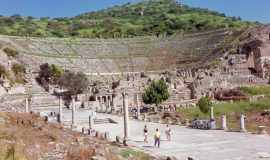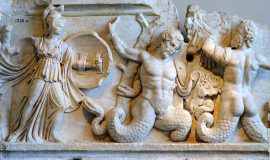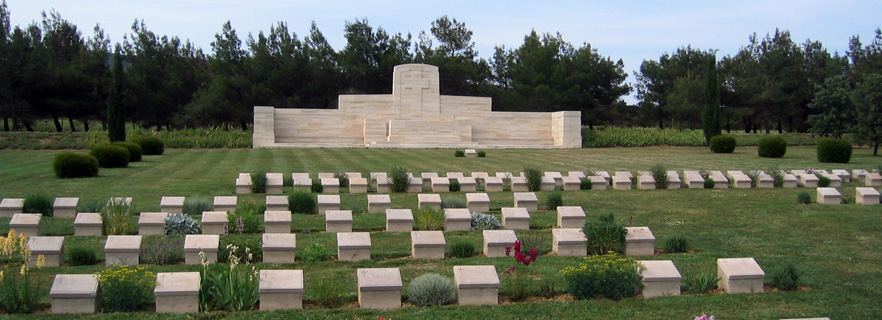
Gallipoli
It is located on a northern entrance to the Dardanelles in the northeastern part of the peninsula bearing the same name, on a height extending towards the sea. It is stated that the name of the city and of the half came from Kallipolis or Galli-Police, which means "city of the ship", or "city of the Gauls". However, there is no exact information about the origin of this name. City, XIV. It has been mentioned by the Turkmen beyliks who were in this region since the beginning of the century. It is noteworthy that the "Gelibolu" style of Düstümâme'ü which contains the history of Aydınoğulları is used. While giving information about the name and establishment of Kemal-paşazâde Gelibolu, it is mentioned that the real name of this place is "Kalipoli", "Poly is a Greek city," Kali is a rumor that the girl of Bolayır tekfurun comes from his name.
History. It is believed that the first settlement in the city, where no exact information about when it was founded by the people, was realized in Traklar. Later, it is stated that Foçalılar and Mıletliler are colonies in this region. However, in this period, a settlement in this name is not found. Since there are many peoples' paths along the course of history, some fortifications must have been established at strategic points. Some ancient ruins in the Gallipoli survey in the city 16 km. It was found in the Duran farm area in the east. Possibly Gallipoli began to stand out as a fortress during the Roman administration in its present place. The city played an important role in the controversy between the Romans and the Pon-tus. Under the Byzantine administration, he first attacked the Goths and then the Huns. Gallipoli is also mentioned among the cities in 441, where a Hun army descending into the Thrace region was destroyed. The fortress, which was repaired by the Byzantine Emperor lustinianos, has become an important port and trade center over time. This region was also influenced by the campaigns of the Arab armies towards Istanbul. They passed under the administration of the Latins in Gelibolu 1204, where the Crusaders passed through Anatolia. After a while Iznik Emperor III. It was taken back by loannes (1233). The Turkmen beyliks, which started to operate on the Aegean and Marmara coasts in the recent times of Byzantine, also targeted the side of Gelibolu. Meanwhile, the Catalans brought to Byzantium to fight with the principalities of Western Anatolia, after their activities in Anatolia (1304), settled in Gallipoli and stayed here for a while. During their activities in Thrace until their withdrawal to Athens and their struggles with the Byzantines. Ece Halil's 500 Karesian Turkmen moved with them and guided them. Gallipoli, which gained an important base for the Byzantine fleet in the 1320s, was the main target of the dynasty under the command of Aydın Beyi Gazi Umur Bey in 1331 or 1332. Umur Bey and the ally Saruhanoglu were attacked, but these forces managed to cling to Lazgölhisan near the port of Gallipoli. But this has not been a long time. Later on, the Ottoman forces of Orhan Bey's son Süleyman Pasha came to be burned with the ally of the Emperor Kantakuzenos (753/1352). Süleyman Pasha, who fought against the Serbs and the Bulgarians with the Byzantine forces, was given as a base for Çimbians. This created a foothold for the Ottomans. Süleyman Pasha, who started to move freely, came to Trakya from one side and Gallipoli from the other side. Gallipoli is under blockade. On the condition that the Byzantines tried to remove the Ottomans from the region with the condition of tribute, the violent earthquake that broke out on 2 March 1354 led to the demolition of the city walls and the destruction of the city. Some of the people have lost their lives, others have escaped because of cold and famine. The Ottomans are easily defenseless and empty cities are obtained. Suleiman Pasha, who heard this news, came here from Biga and rebuilt the fortress again. Turkish population was brought from Anatolia and city was settled.
It was an important base for operations in Gallipoli, Thrace and Balkans during Ottoman rule. This was also the center of the first Pasha sancağ. Süleyman Pasha was buried in Bolayır, where he died in 1357, when he built a mosque and imaret and allocated foundations. On August 13, 1366, the Duke of Savoy Dede Amedeo took Gallipoli with a Crusader fleet and left for Byzantium on June 14, 1367. This disrupted the Osman-Ilan's bond with the Balkans, but the Byzantine Emperor IV. Andronikos left Murad's insistent request to the Ottomans. This second conquest of 1376 was entered into Ottoman domination as Gelibolu kati. This was a gateway for the Ottoman army and gained importance as a naval base. Yildirim Bayezid re-arrested Kalay and expanded the port and built two towers: he turned it into a customs station and forced the civil merchant ships returning to Istanbul to come to the port. The Venetians, whose commercial interests were very bad, were attacked for the city. The mixed environment at the time of fetish accelerated their activities. They made an agreement with Musa, the Ottoman prince for free passage from the Bosphorus; But during the reign of Çelebi Sultan Mehmed the Gallipoli was the main debate between the Ottomans and the Venetians. In 1415, the Ottoman fleet at Gallipoli attacked the islander in the hands of Venetians. Then the Venetian fleet of Loredano came to Gallipoli, destroying the Ottoman navy in the port (May 1416). According to Venetian sources, 12 Ottoman ships were captured and 4000 were killed. However, the Venetians could not hold the control of the Bosporus. In 1423 and 1430 the Venetians were attacked by Gallipoli, but they did not make much progress. By the way, city II. He played an important role in the struggles between Mu-rad and his uncle Mustafa (Dummy). Mustafa had dominated Gallipoli with the support of his supporters. But he did not give it to the allied Byzantines. Strict control of the throat, II. Murad did not even find the means to go to Rumelia. Finally, with the help of the Genoese fleet, he landed near Gallipoli and captured the city.
The Gelibolu Sultan Mehmed, who maintained the status of being an important military naval base until the conquest of Istanbul, was fundamentally arbitrated. In fact, for the protection of the Bosphorus and the city, two fortresses were built at the entrance of Çanakkale. Thus, the fact that the resistance of both Gallipoli and Istanbul started from the Dardanelles Strait was fully revealed. But Gallipoli. In 1515, the Golden Horn Shipyard in Istanbul began to lose its feature of being a naval base. Nevertheless, it was one of the major hubs of the ship for naval service. 1. Ahmed came to town in 1613 and visited Yazıcızâde Mehmed Efendi and then Süleyman Pasha in Bolayır. XVII. The city, which was once again in the forefront of the Crete campaign that started towards the second half of the century, was greatly influenced by the blockade that Venetian tiller launched in the throat. Blockade activities of Venetians XVII and XVIII. It also continued in the beginning of the century. After the Çeşme disaster in 1770, the Straits and Gallipoli faced another new threat. From the 1790s onwards, he entered under the influence of a monument called Hafiz Mustafa and experienced some confusion. The greatest danger came to fruition during the Gallipoli battle. The allied forces were bombed during the extraction operation and there was some devastation. It was then occupied by the Greeks on August 4, 1920, but was abandoned on 3 October 1922. It was the center of the province at the beginning of the Republican era (1923). This situation. In 1926, it continued until it was transformed into a district center by Law No. 877.
Physical, Cultural and Socioeconomic Structure. As well as being an important route point between Europe and Anatolia throughout the history, sheltered port attracted attention as the last big station on the way to reach Marmara from the Bosporus and therefore to Istanbul. This was where the control of the passage to Marmara was almost always a feature of Istanbul's lock. In 1613 i. Mustafa Safî, who describes Ahmed's visit to the city, describes it as "a cloak of dery-i sefidin". This strategic preoccupation has made Istanbul a target to keep under control and for those who want to open up to the Balkans. The Byzantines and the Venetians and Genoese who held the Black Sea and Mediterranean trade in their hands had made great efforts in this way. Karesi and Aydınoğullan, the Turkoman principalities in Western Anatolia, also headed here. The city is a naval base under Ottoman rule. It was a gateway and a commercial center. At the same time, this was the center of the Ottoman Early Childhood. 1394 by H. J. Schiltberger. He wrote in the form of "Kalipoli" in this city and passed to Anatolia and described it as a fortress-city. As a matter of fact, a few years before his passage from here, in 1390 by the orders of Yıldırım Bayezid, Sarıca Pasha made calico fortune, cleared the pools in the harbor and closed the entrance with chains. A quarter century after the Ottoman conquest, in 1403, Castelian ambassador passing through Gelibolu stated that the city of Clavijo was in the administration of Süleyman Çelebi and that large Ottoman naval vessels were located here, including large shipyards and ponds. Clavijo saw about forty ships at the port and talked about the presence of crowded troops in the area. Seeing the city in 1422, G. de Lannoy also mentioned that this is a great city and port.
The most detailed information about Gallipoli, XV and XVI. It is in the revolutions books belonging to the century. According to the book dated 1475, Gallipoli was a large city with forty towns. Generally, the neighborhoods were formed around a mosque or a mosque. The most crowded ones were the neighborhoods of Sarıca Pasha Imareti, Hacı Hamza, Ahmed Bey, Crimean Khidr, Haci Tannverrniş, Sofu Halil and Suyağı mosques. Especially II. Murad and II. The imaret (846 / 1442-43) made by Saka Pasha, one of the vigilants of the Mehmed movement, formed the core of another important settlement. The periphery of the mosque built by Murad I was also an important settlement unit. In most of the neighborhoods, Muslims and non-Muslims lived together. The total number of Muslims was around 860 in thirty-nine localities. There were also thirty-four more in Kozludere village, which seemed to be considered as the outer quarter. In the city there were "Armenian congregations", all of them with Turkish names, up to four rows. Non-Muslims scattered in thirty-two neighborhoods consisted of 184 households. The fact that they are from the "kadim" Gallipoli auris in the records in the book should be the result of the city's second delivery with the terms of the agreement. Some of the Greek Cypriots stayed here while being handed over to the Ottomans. After the conquest of Istanbul, the leaders of the Greek people went to Istanbul; Some of the rest were placed near Kozludere and the place called Eski Gelibolu. In the area registered in the name of Frenk, there were five Latin-speaking merchants. On the other hand, there was a crowded crowd of ship chiefs in the city. These were ninety-three divisions, and each division corresponded to a ship (galley). The first is the captain of the captain, thirty-two. Seven mehter, five servants. The other squads are usually a chieftain, a seroda. Two komi and nine azeb-den. This also showed the members of the squadrons at the same time. Their total number is one captain, ninety-two captains. Ninety seroda. 835 azeb. 148 were komi, seven mehter, a rowkeeper and had a salaried status. There were also five rulers, including thirty men, eleven kayak reis, and fifty-nine men. In addition to this, there were thirteen civilian chiefs who were obliged to carry out the duties assigned by the state, which were stated to "hustle" with their own vessels. They were sitting in Gallipoli neighborhoods. According to all these figures, in 1475 the city had a population of 5500. The total population of other military groups and fortress guards (forty-two) was around 7,000.
According to 1518 Tahrir, it is understood that Gallipoli further developed physically. The number of Muslim neighborhoods rose to fifty-five; There were also four non-Muslim neighborhoods, four in Old Gallipoli and two in Manyas. Non-Muslims who have previously lived scattered in müslu-man neighborhoods should have been transported by establishing separate neighborhoods during this period. Especially Şeyh Muhyiddin Yazici Mescidi, Mesih Pasha Mosque, Yâkub Bey Mosque, Yahşizâde, Efdalzâde Ahmed Çelebi are attracted attention among the newly established neighborhoods. The existence of the statesmen, the ruler, among Gallipoli and the mosques who gave their names to the neighborhoods is a result of the cultural structure of Gallipoli as an administrative center. At this time, the number of Muslim civilian population has increased (1100, 250 mücerred, 'bekâr), and the number of non-Muslims has also moved parallel to this trend (206 hâne, 57 mücerred, 55 fifties / widow). In addition, the Latins maintained their residence in the city as three hailstones. In the meantime a seventeen-digit Jewish community emerged. These are XVI. They belonged to immigrants from Spain in the beginning of the century. It was pointed out that three of them came from Istanbul for trade. Again, there were two Armenian registered. According to all these figures, the civilian population had risen to around 7,000. On the other hand, the subsidiary companies have also maintained their organization. The numbers of the sailors' squadrons have not changed, but the squadrons of the squadrons have decreased considerably. This was probably the result of the operation of the shipyard in Istanbul. These are not mentioned in the book of 1530. This can be attributed to the fact that the records on this group, which are already in progress, are no longer included in the readings prepared for different purposes. However, it can be said that the Nkjhnian lost his importance towards the mirror. Indeed, XVII. It is known that there are thirty-four divisions in the Gallipoli vessels in the 19th century. However, physical development and population growth continued. In 1530 the number of Muslim neighborhoods rose to fifty-nine, one of them Kozludere. The other two villages named Bayır were shown as urban outskirts. In addition, there were six Christian neighborhoods, a Jewish community, and five Latins.
Muslim population in 1530. Except Kozludere and Bayır, 993 were 203 mücerred-den. The Christians were divided into 231, thirty-four, and thirty-five. In addition, there were three groups of taxpayers who registered rowers, quarrelsmen, and meremets. The latter were responsible for the repair and maintenance of rooms in the intricate shop, cellar and caravan palace of Gallipoli. According to all these figures, the population was again about 7000 on these dates. 1518, there is no major change in terms of demographics, but the growth has continued from the physical point of view. N. de Nicolay, who gave information about Gallipoli in 1551, pointed to this development and stated that it was a major trading center, that there were windmills and about 600 houses; Two mosques and two imarets, mentioning that there is no wall around the city outside the castle. This information suggests that the physical structure of Gallipoli covers a common area. Ph. De Frasne-Canay. It is said that some of the walls of the city, which is full of Turkish houses, are buried in the waters and these should belong to the lima. There are also many camisons here, the chant of the starboard brains sitting at the top.
These expressions of travelers, XVI. It can be followed from the tahrir books belonging to the second half of the century. In 1567 there were fifty-four Muslims in the city and sixty neighborhoods with sixty-two Christians. The Muslim population reached 1310 hryvnia, the hi-ristiyantar reached 351 hryvnia, and forty-eight were recorded as Jews. In terms of civilian population, Gallipoli reached its peak period. According to these figures, the total population exceeded 8,000. The most crowded neighborhood is thirty-four. It consisted of eight mücerred. XVII. Towards the beginning of the century, it is understood that the city has suffered a great shock. If this does not result from a change in the system of irrigation, then it can be assumed that there is general confusion and the role of natural disasters. As a matter of fact, in 1601, the number of neighborhoods was sixty-two from the Christians. But the population in the neighborhoods was very low. The number of Muslims was 659, and the Christians were 245. Thirty were Jews. The total population was about 5,000. In this period, the most crowded neighborhoods were Haci Yaqub, Gazi Hüdâ-vendigâr Mosque and Ali Fakih, and the number of horns was below thirty. Christian communities are more prosperous in terms of population.
XVII. Towards the second half of the century, the tension of Gallipoli stopped and a new vitality arose. In this, the increase seen especially in commercial activity played a role. A Karayit Jew who saw Gallipoli in 1641, which was described as a great city by the Polish Simeon who passed through here at the beginning of the same century, is here with twenty-five mosques, 100 shops, two mosques. A beautiful harbor city where the city walls are seen. In 1655, J. Thevenot saw the ruined ship skeletons in the eyes of the old shipyard and gave them seven. In the same year Evliya Çelebi (1659). Like Thevenot, the eyes of the dockyard indicate that the old "veterinarian" lies in the gypsies. This information was written in 1672 by Ch. D'Arvieux also repeated. Evliya Çelebi's presentation of Gallipoli is extremely detailed and accurate. According to him, the castle was situated on a rock, with the suburbs of the city lying on the south, west and north sides. There were 300 houses in the fortress, 63 neighborhoods and 700-800 houses in Varoshi. From these figures it can be said that the total population has exceeded 6,000. In this city, mosque, mosque. The number of buildings such as tekke and zaviye was 164. Sultan Mosque and Ahmed Pasha Mosque were in the castle. Evliya Çelebi writes that the Mesih Pasha Mosque, Sarıca Pasha Imareti and Madrasa-si are named by name and there are many mosques, nine dârülkurrâ and a great Mevlevi-hanein. Mevlevihane was built at the beginning of XVI century and played an important role in the spiritual life of the city [9]. There were some small churches in Christian neighborhoods.
Evliya Çelebi's knowledge of the physical structure of the city is also confirmed by the handwritten books of 1645 and 1675. According to this, fifty-nine Muslims are divided into sixty-five neighborhoods, of which six are non-Muslims [four Greeks, one Armenians, one Jew) 1600 in 1645 at Gallipoli. In 1675 there were over 1150 houses. In 1645, about 1200 of the total number of horses were Muslims. More than sixty Jews. 400 of them were Greek and forty-eight were Armenians. These numbers appear to have decreased in 1675. As a matter of fact, a total of more than 1,150 houses are Muslims near the 850. Thirty-five in the Jewish tribe chambers), about 240 Armenians were living in Greece and nineteen; Some of the houses were ruined by the time they would not be used. According to these figures, the total population decreased from 7500-8000 in 1645 to 6000 in 1675. Thus, Gallipoli, XVII. It is understood that the population started to regress again just before entering into the last quarter of the century and the trade volume also narrowed. According to the quotes of 1645 and 1675, there were houses of Armenians and Jews in some Muslim neighborhoods of Gallipoli. There were many widowed women among the Muslim homes. The houses which the groups which did not give the Avarız tax and were written in the military had reached to 230 in 1675. It is noteworthy that there are a large number of people who are in charge of cadres in the islands or in the rumeli in the said groups. A significant portion of them were former ladies. Therefore, it can be said that the city has a certain cultural level and social structure in this period. The preference of the ladies is that they are close to Istanbul and easily reachable in case of any duty, as well as being cheaper than Istanbul. These days the most crowded places in the city are Yagci Khidr, Little Pilgrim. Sofuca Halil, Ali Fakih, Câmi-î Atîk, Hacı Yâkub. Has Ahmed Bey, Suyağı, Keçeci Hadji, Ibn Bennâ. Trustee. Hallâc Hüseyin, Hacı Dizdar, Haraççı Hamza. Kalenderhane. Hoca Shams, Kilabudancik, Hoca Hamza, Mufti Ahmed Çelebi, Elhac Dogan were the neighborhoods. In addition, two new neighborhoods named Yukarı and Aşağı mahalle were formed as the result of dividing the neighborhood called Dogan Arslan into two. It is stated in the book that thirteen of the Jews were seated in the foundation rooms of the Sheikh Efendi Hani, while this place was later ruined. Greek Cypriots, Aya Dimitri, Aya Yorgi. They were living in the neighborhood of Aya Nicholas, and there were also Slavic and Latin people among them. These were probably merchants and foreign missions representatives.
Gallipoli's XVII. In the second half of the century, Ch is a city with a population of 20,000, which is highly exaggerated. D'Arvîeux writes that more than half of this population belongs to the Turks and the rest to the Greeks and Jews. XVIII. It can be estimated that the population increased slightly in the century. Indeed, at the end of this century, he speaks of the pearl-crowded city. In 1814 E. Raczynski is Gallipoli's 40,000 inhabitants. Writes that it is a big city with 10.000 cadres and tells an active caravan route to Tekirdağ. [13] XIX. At the end of the century a population of 20,000 was given to the Kömüsü-a''l'm. Towards the 1925s. It is stated that while Gallipoli was in a seventy-one local administrative division, a new arrangement was made and these were made into four districts (Lower, Upper, Jewish and Armenian neighborhoods)
It shows the development as a naval base and its importance XVI. Gelibolu is given importance to the harbor and the shipyards especially due to the large sea expeditions along with the decline from the second half of the century. XVI. It also draws attention as a place where the Beginning House is located and organized until the end of the century. The fact that it is a parade throughout history has made it an active port in commercial terms. The fact that it is located on the way connecting Rumelia to Anatolia and reaching Istanbul from the Mediterranean has increased its importance as a stopping place for many commercial ships. As a matter of fact, Clavijo, XV. At the beginning of the nineteenth century, it refers to vessels loading limestone cotton bales. In addition, Florentine silk merchants transported the song they had received from Bursa to Gallipoli via Edirne, on the way to the historical Via Egnatia and to Ragusa. In this trade, the city had an important position as a customs point. Active trade can also be understood from customs taxes. In 1475, the scotch was awarded with 400,000 pockets of customs revenue. In 1518 this figure was 766.663 ak. The picture of the pier rose to 610.000 akçeye in the 1530s. The official picture showing the trade volume in the city was 15.000 akcakey. The tax was also levied on Anatolian sheep, which were passed from here and reached large quantities. Its annual tax turnover amounted to 66,000 pockets. But XVII. There was a decline in trade as well as in the end of the century, and in 1689 the French consulate left. Therefore, 700,000 pockets of which Evliya Chalabi referred to as customs tax are showing records of earlier periods.
XV and XVI. In centuries, there were many shops in Gallipoli. Fumble. There were also ninety-six shops owned by Sanca Pasha Imareti foundations, a bedesten, a caravanserai and a double bath. Their rent income was going to foundation. In 1475 there were also two bathhouses, one ruined five caravanserai, bezirhâne, bozahâne and 350 shops belonging to various foundations. XVI. According to the records of the Century, these numbers increased even more. Again, there were many market places in the city. XVI in Gallipoli. In the 20th century, there was a great deal of activity in the field of cereals, fish market, lice bazaar, animal bazaar, vineyard soup, attar, hallaç, pabuç-çu, kebeci, extractor, painter, cook, takkeci, furrier, Gain, locksmith calligraphy were available. An important part of the people was doing cotton weaving. In addition, there were quite a lot of leather workers and those who made the products. Non-Muslims were usually working in technical fields, manufacturing and preparing ship materials. Among them, watchmakers, blacksmiths, reindeers, coaches, spoons, such as proprietors were popular. Inbound XVI. Until the beginning of the century, shipbuilding was very successful. For example, between 1496-1498 here twenty galleys, five qualities. Eight boats, twenty-five boats. Later the ship's construction stopped, but some of the boats were well maintained. Fourteen ships were built here after the lunar defeat. The shipyard in Gallipoli had thirty pools in 1526, and these were XVIII. Had been repaired from time to time to a substantial extent. The harbor has been repaired for several years in the same way. But XVIII. In the last quarter of the century the shipyard was completely devastated, twelve on one side of the harbor. The other eight on the other side became unusable, and the stones were used for cellar and shop construction. [14] In addition, there was a barhout in Gallipoli and gunpowder production for Tersane-i Amire in Istanbul. Powder manufacture XVII-XV1H. It lasted for centuries. Gallipoli has long been a center for the captive trade; As well as the production and sale of wheat, cotton, wine, must, bow, arrow and naval supplies.
Gelibolu. XV. In the second half of the century, there were many mosques, mosques and monkeys with foundations. In 1475 there were twenty masjids, six minarets and two madrasahs with a foundation. Those who have rich foundations, II. Murad and Fatih Sultan Mehmed were the patriarchs of Sarıca Pasha Imam. II. Among the Murad's men, Has Ah-med Bey is the fortified mosque built by Murad in the palace of the 1st Mujahide and another mosque which was later turned into a mosque in the Çukurbostan neighborhood. Haci Mustafa Mescidi, Mihalic Hatib Madrasah, Kasap Tat Ahmed Maschidi. Haci Kemal (şağı) Mescidi, Sinan Bey Mescidi, which is the name of the brother of Sanca Pasha, Yağcı Hızır Mescidi, II. Balaban Pasha Madrasa (foundation 846 / 1442-43), the Hüsâmeddin Masjid, from Murad's revolutionary statesmen. Haci Yegân Mescidi. Ahî Mûsâ Zaviyesi, Hoca Hamza Mescidi, Gazi Hü-dâvendigâr Mosque, Haraççı Hamza Masjid and Haci Mehmed Masjid. According to the records in 1518, Yazid-zâde Muhiddin Masjid, Alâeddin Masjid, Hüsam Hoca (Buçuk Kilindir), Güdük Hızır, Hacı Doğan, Ahmed Çelebi (son of Hızır Bey, mufti of Bursa) and Yâkub Bey were added. On this last date, the mosque and the forty-five meccidine foundations were recorded. Also II. Bayezid's daughter Ayşe Hatun and his wife Rumeli Beylerbeyi, also had works by Sinan Pa-sa, who also made the Gelibolu Sanjak beyyli. The main ambassadors are Sinan Pasha, Karaca Bey, Tat Ahmed. Halac Ahmad and Ahmad Devle were the defenders. This latter was under the duties of Mevlana Sheikh Muhyiddin in 1475 and later Hüsameddin Efendi, his son. Therefore, it can be said that this place, which seems to be a friend's house, later passed into the hands of the sheikhs close to Mevlevi. As a matter of fact, zaviye was also the foundation of mevlevîhânen. According to Salnamelere, in the city in 1890, Gazi Hüdâvendigâr (787/1385), Mesih Pasha (901 / 1495-96), Kadı Pier (966/1559), Yenicami made by Sheikh Mehmed Efendi. There were eight mosques, many mosques, nine mosques, a mosque, two churches, a synagogue, including Liman Mosque, İskender Mosque, Buhûrî Mahmud Efendi's mosque and Cüllâlar Mosque.
In the city where the famous Ottoman historian Gelibolli Ali Mustafa Efendi was born, some well-known Ulama and statesmen also grew up or lived here. Among these are Yazıcızâ-deler, Zeynelarab. Aghazade Sheikh Mehmed Efendi, Kutb Ömer Efendi, Dâî Ahmed Efendi, Mustafa Feyzi Efendi, Sinan Pasha and Captain Gazi Mehmed Pasha.
After Gallipoli conquest, Rumeli was the first Pasha sancak, as well as a sanjak and a sanjak center. Later, he gained fame as a maritime administration center. The captain of the Ottoman naval base had taken center. Therefore, captain-ı derya was also known as sanjak. The Gallipoli captain-captain was showing a separate structure because he was deryalara. But the shape of the Rumelian beylerbeyi league was not what it was. In 1518 sanjak Gallipoli, Keşan, Malkara, Umni, Thassos. Ecevic, İmroz and Semadirek. The total number of Muslims in this year was 2639. The non-Muslims were 2714 and they were gathered in Lim-ni, Thassos, Imroz and Semadirek. All the starboard XVI. At the beginning of the century there were 25-30,000 people. In Gallipoli 1533 Hayreddin Pasha became the master captain of this place after the formation of the captain and the establishment of the province of Cajâyir-i Bahr-i Se-ffd. XVI. In the second half of the century, the sergeant Ipsala and Gü-mülcine were connected. XVII. At the beginning of the century, the administrative units of the sancag did not change. After Tanzimat, Gallipoli is affiliated to Edirne province. Keşan, Şarköy. Murefte and Eceabat accidents. In 1865 here in Şarköy. Evre, Enez, Ferecik, Gümülcine were connected to the accidents. XIX. By the end of the century there were nine counties and 152 villages besides these accidents. In 1309 (1891-92), there were 13,691 Muslims with a total of 3608 households. There were 21780 Greeks in 4768 houses, 1032 Armenians in 188 houses and 1756 Jews in 210 houses {Salnâme-i Vilâyet-i Edirne H309I, p. 326-333). Eceabat to Gallipoli, which was the province of the Republican era (1923). Enez. İpsala, Keşan, Şarköy were connected. Gallipoli, which came to the status of the district center in 1926, depends on Çanakkale today and has not developed much. In 1927, the population increased from 5445 to 12,713 in 1940 and to 16,496 in 1945. In 1950, it dropped below 10,000 (9893), while in 1955 the population again exceeded 10,000 (12,341) Fruit, vegetable, fishery and vegetable oil production is on the front line in recent years.
